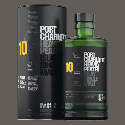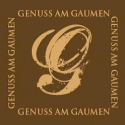Ein überaus spannendes Projekt stellt uns die Virginia Polytechnic Institute and State University in ihrer Pressemitteilung vor. Die Aufgabe: Veröffentlichte Whisky-Rezensionen erfassen, systematisch analysieren und durch maschinelles Lernen einen Schritt Richtung Standardisierung der Beschreibung von Aromen gehen.
Hierzu werden 6.500 veröffentlichte Whisky-Rezensionen mit jeweils etwa 50 bis 100 Wörtern erfasst, um dann eine gemeinsame Sprache in den Beschreinungen der Aromen zu finden. Als Ergebnis wollen die Wissenschaftler dann entwickeln, wie Whisky konsistent und systematisch beschrieben werden kann.
Alle weitere Details zu diesem interdisziplinären Forschungsprojekt finden Sie in der folgenden englischsprachigen Pressemitteilung:
Fluent in flavor: Using machine learning to build a flavor language for whiskey
June 10, 2020
Smoke. Coal dust. Fine leather. Dark berry fruit. Coffee grounds.
So many descriptors and personal perceptions swirl around a glass of whiskey. Published whiskey reviews include sensory and nonsensory descriptions of thousands of these distilled spirits.
Finding meaning in and understanding these descriptors is at the heart of discriminating whiskey connoisseurs’ debates. But even for the not-so-discriminating, all of these words can be confusing for investigating the flavor and value of a bourbon that costs $130 a bottle – when a $55 similar substitute would do.
A research project by Department of Food Science and Technology researchers Jacob Lahne and Leah Hamilton and University Libraries’ data consultants Chreston Miller, and Michael Stamper received a SEAD Major Grant from The Institute for Creativity, Arts, and Technology (ICAT) to create a tool that finds a common language in a data set of 6,500 published whiskey reviews of about 50 to 100 words each.
ICAT awards SEAD grants to projects that bring together scientists, engineers, artists, and designers to tackle some of the world’s most complex challenges. Figuring out how to consistently and systematically describe whiskey could be an important and complex challenge for many, but beyond this specific food product, the deep learning tool this project creates could be used for all research that uses descriptive data.
The team is applying Natural Language Processing (NLP), a subfield of linguistics, computer science, information engineering, and artificial intelligence that involves programming computers to process and analyze large amounts of natural language data — whiskey descriptors.
This data science technique offers researchers opportunities to analyze more data than what was possible through the traditional time-intensive and expensive manual text analysis process. According to the project team, there have been no previous attempts to apply this sort of NLP approach for sensory-evaluation purposes.
“We don’t know anyone else who has tried to take these reviews, which are in descriptive but messy natural language, and systematically analyze them this way. One of the nice things about whiskey is its enthusiast market,” said Lahne. “People care about taste deeply. Whiskey lives or dies by sensory perception. These reviews are in metaphorical, messy, natural language. What we’re trying to get to is some shared concept about taste.”
Hamilton said they may even be able to make connections among the descriptors used, the production process, and the geographical origin of the liquor.
“This tool will analyze free-response comments and identify which words are describing flavor and separate them from what’s not descriptive,” said Hamilton. “It will also identify which words are related and describe the same flavor. This will ultimately be helpful to consumers who may want to buy something that’s close to a high-dollar whiskey but is more affordable.”
As a computer scientist with a research interest in qualitative data, Miller is excited about what this project could mean as a proof of concept for a larger proposal.
“There is value in a tool with deep learning, a subset of machine learning,” said Miller. “Deep learning is a machine learning technique that uses the technique of Deep Neural Networks, based on how neurons in the brain function, to automatically learn features of the data which then aids in identification. By training the tool, we are able to comb through more information and make sense of it more quickly and efficiently than a human. If we throw enough data at it, the peculiarities are diluted. This is a booming area of research and one that is very exciting.”
When the team has its common language defined, they will pass the data to Stamper, information visualization and interaction designer, to create the user stories, flows, and interfaces that audiences will use to interact with, and draw insight and meaning from the data.
“We will define our target audiences and build an interface to communicate the data. We can use visualizations to see how we can dig deeper into the information,” said Stamper. “The data is so rich that the visualization types that we’ll be able to incorporate can include networks, geospatial, and temporal – it’s just figuring out what will work best for making the information in the data meaningful to those who are interested in seeing and interacting with it.”
Upon the completion of the year-long process, the team will raise a glass to future research that could build upon this novel approach they have
















